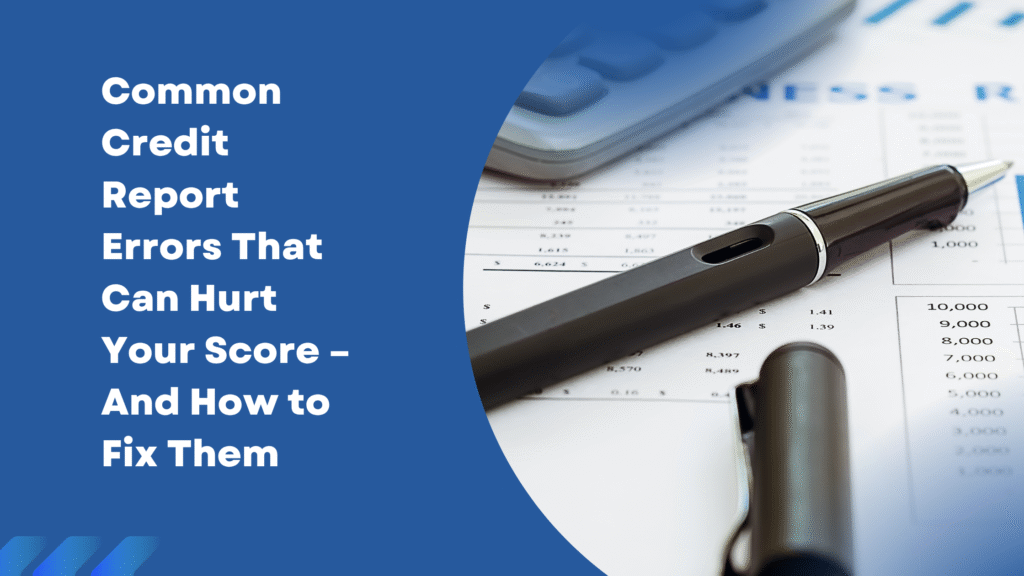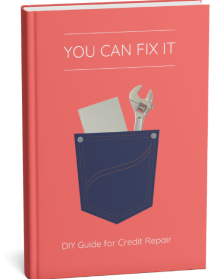Introduction
Your credit score plays a vital role in your financial life. It influences whether you get approved for a loan, the interest rate you pay, and even your chances of renting a house or getting a job in some cases. However, what if your score drops for reasons that aren’t your fault? That’s what happens when credit report errors occur — and they’re more common than many people realize.
Studies have shown that a significant number of credit reports contain some form of error, and these inaccuracies can unfairly damage your creditworthiness. The good news is that most of these issues can be fixed once you identify them. Let’s take a look at the most common credit report errors and the steps you can take to correct them.
1. Personal Information Errors
Small mistakes in your personal details might seem harmless but can lead to big problems if not corrected.
Common examples:
- Incorrect spelling of your name
- Wrong or outdated address
- Incorrect phone number or date of birth
- Mixed-up files with someone of a similar name
Why it matters:
If your personal information is inaccurate, your accounts might get confused with someone else’s, possibly bringing their debts or missed payments onto your report.
How to fix it:
Contact the credit bureaus (Experian, Equifax, and TransUnion) to correct these details. Provide valid identification documents such as your ID proof, utility bill, or Social Security card to verify the correct information.
2. Account and Balance Errors
Sometimes, credit reports contain inaccurate account details or balances, which can seriously harm your credit utilization ratio.
Common examples:
- Accounts that don’t belong to you
- Incorrect account balances or limits
- Closed accounts listed as open
- Duplicate accounts appearing multiple times
Why it matters:
If your credit utilization appears higher due to wrong balances, your score may drop. Utilization makes up a major portion of your credit score, and inflated numbers make you look riskier to lenders.
How to fix it:
Compare your credit report with your latest bank statements. If you find discrepancies, contact your lender to confirm the right data. Then file a dispute with each credit bureau showing the incorrect information.
3. Payment History Errors
Your payment history makes up the largest share of your credit score — around 35%. Even one incorrect late payment can severely hurt your score.
Common examples:
- On-time payments reported as late
- Entire accounts marked as delinquent
- Paid collections shown as unpaid
Why it matters:
A wrongly reported late payment can drop your score significantly and stay on your record for years.
How to fix it:
Collect proof of timely payments — such as receipts, bank statements, or confirmation emails — and submit a dispute to both the credit bureau and the lender. They are required to investigate and correct verified mistakes.
4. Outdated Information
Negative information on your credit report should not remain forever. However, sometimes old debts or delinquencies stay on your report longer than they should.
Common examples:
- Late payments older than seven years
- Bankruptcies older than ten years
- Paid-off loans still showing as active
Why it matters:
Outdated negative entries drag down your credit score unnecessarily. You’re protected under the Fair Credit Reporting Act (FCRA), which sets limits on how long such data can remain.
How to fix it:
Check the “date of first delinquency” on each negative account. If the record exceeds the legal time limit, file a dispute to have it removed.
5. Identity Theft or Fraudulent Accounts
Identity theft can lead to fraudulent accounts being opened in your name — a serious issue that damages your credit and financial reputation.
Common examples:
- Unknown credit accounts or loans
- Unauthorized charges
- Hard inquiries you didn’t initiate
Why it matters:
Fraudulent accounts can cause unpaid debts and late payments to appear on your report, drastically reducing your credit score.
How to fix it:
Immediately contact the lender that issued the fraudulent account. Place a fraud alert on your report through the credit bureaus and consider freezing your credit to prevent further misuse. You should also file a report at IdentityTheft.gov for an official record.
6. Incorrect Account Status After Bankruptcy or Settlement
If you’ve gone through debt settlement or bankruptcy, those accounts should accurately reflect their resolved status.
Common examples:
- Accounts still marked as active after discharge
- Settled debts reported as unpaid
- Duplicates of discharged accounts
Why it matters:
These errors can make it appear like you still owe money, which affects your ability to rebuild credit.
How to fix it:
Keep all documents related to your settlement or discharge. If your report doesn’t match, dispute it and attach proof such as settlement letters or court documents.
How to Check and Dispute Errors
You can legally obtain a free credit report every 12 months from all three bureaus via AnnualCreditReport.com. It’s wise to check each report regularly since not all bureaus have identical information.
Steps to dispute errors:
- Get your reports from Experian, Equifax, and TransUnion.
- Highlight inaccuracies by comparing details across reports.
- Collect supporting documents like receipts, payment proofs, or identification.
- Submit a dispute online or by mail to the bureau and lender.
- Wait for resolution — bureaus must respond within 30 days.
Keep copies of all your documents and correspondence. Once the dispute is resolved, confirm that your report reflects the corrections.
Tips to Prevent Future Credit Report Errors
- Review your credit report at least once a year.
- Sign up for a credit monitoring service to get alerts on suspicious activity.
- Keep your personal and contact details updated with lenders.
- Use secure passwords and avoid sharing personal data online.
- Report lost or stolen credit cards immediately.
Final Thoughts
Credit report errors are more common than most people realize, and even a small mistake can have serious consequences for your financial future. The best way to protect yourself is to stay informed, check your reports regularly, and act quickly when something looks wrong.
Fixing errors doesn’t just improve your score — it ensures that your financial reputation accurately represents who you are. By taking these proactive steps, you’ll safeguard your credit, gain better access to loans, and maintain stronger financial stability in the long run.





